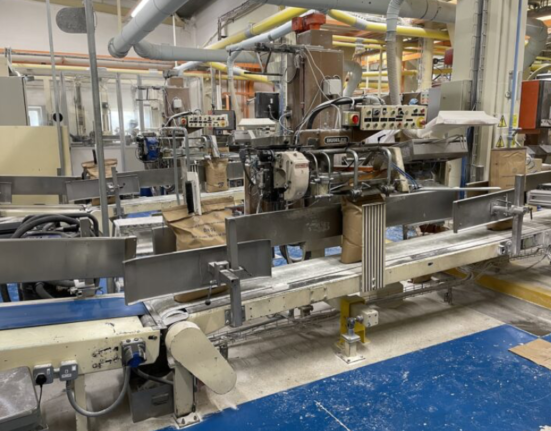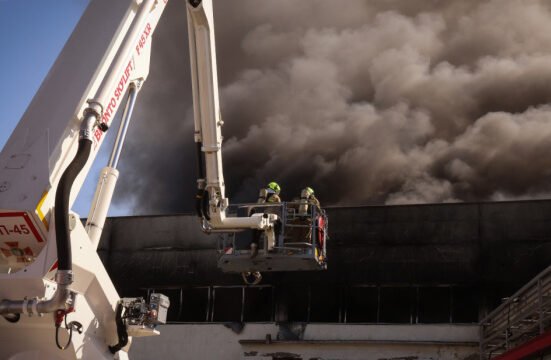Originally the command management system of each new warship was supposed to be Canadian-made and under the full control of the Canadian government.

Article content
The United States controls many of the key systems onboard Canada’s new warships, allowing the Americans to hold this country hostage over future upgrades or even the provision of spare parts, defence industry officials warn.
Taxpayers are spending as much as $80 billion on a new fleet of Canadian Surface Combatants to be constructed at Irving Shipbuilding.
Advertisement 2
Article content
The heart of each of the warships is the command management system, which controls weapons, radars and other intelligence-gathering equipment.
Originally that high-tech system was supposed to be Canadian-made and under the full control of the Canadian government.
But that was switched out for made-in-the-U.S. technology called Aegis, allowing the Americans full control and oversight over the supply of parts, modifications or future upgrades, industry officials confirm.
“This is what happens when you exclude Canadian companies: You find yourself potentially being held hostage,” explained Alan Williams, the former procurement chief at the Department of National Defence. “We don’t control the (combat management) system; the Americans do. Who knows what they are going to demand from us?”
Other Canadian defence industry officials acknowledged the same concerns. They asked not to be named as they did not want to jeopardize ongoing contracts with the federal government.
The U.S. government already controls much of the technology used by the Canadian military, but previously that was not seen as an issue as the Americans were viewed as close allies.
Article content
Advertisement 3
Article content
But, with U.S. President Donald Trump in office, the situation has changed. Trump has vowed to economically punish Canada with heavy tariffs. He has also threatened to annex Canada and to make it into the 51st state.
DND did not respond to a request for comment. It would not answer whether it had received assurances from the Trump administration about issues of control over the Aegis system and the Canadian Surface Combatant (CSC).
The Ottawa Citizen reported in December 2020 that Canadian industry officials were already warning DND and Public Service and Procurement Canada bureaucrats about the potential dangers of U.S.-controlled technology and the lack of Canadian content onboard the CSCs. But those concerns were dismissed by department officials.
The Canadian Surface Combatant project would see the construction of 15 warships for the Royal Canadian Navy. But the project, to replace the current Halifax-class frigates, has run into delays and massive cost overruns. It was originally estimated to cost $26 billion, but now the Parliamentary Budget Officer puts that figure at around $80 billion.
Advertisement 4
Article content
Williams said that, given the current situation with the Trump administration, it made sense to put the CSC on hold so the project could be re-evaluated. The Canadian government has committed to building the first three ships, but no construction contract has been signed yet.
DND has previously been concerned about U.S. control over key defence technology. In 2010, when the Halifax-class frigates were being modernized, the department insisted on installing the newly developed Command Management System (CMS) 330. The development of CMS-330, costing millions of dollars, was financed by Canada, giving it total control over the technology, Williams said. In addition, the government stipulated that other key systems on the Halifax-class ships come from companies from Canada, Sweden, Israel, Germany and the Netherlands.
When the Canadian Surface Combatant team was unveiled in November 2017, Lockheed Martin Canada, a subsidiary of the U.S. defence giant, highlighted that its proposal included the CMS-330. The firm pointed out that the maximum focus was to get Canadian content on the new warships.
Advertisement 5
Article content
But, once Lockheed Martin won the contract, it dumped the CMS 330 and substituted Aegis.
Lockheed Martin Canada, which is leading the design team on the CSC, referred questions to the DND, but in a statement it did point out the Aegis system was being used on the surface combatants and would be combined with a tactical interface being derived from the CMS-330.
In May 2021, the U.S. State Department announced it was selling Canada the radars and Aegis combat system as well as other software to outfit the first three CSCs. The cost to Canada was $1.7 billion U.S. At the time, the U.S. government noted the deal would significantly help U.S. military forces in that it would allow Canadian warships to take part in “missions of mutual interest.”
Irving Shipbuilding stated it did not have any information about whether Canada had received assurances from the U.S. about the Aegis system. The deal for that combat system is being conducted through a government-to-government transaction with the United States, Irving spokesman Mel Schori stated in an email. “As such, (Irving) is not privy to the details of that transaction,” he added.
Advertisement 6
Article content
In 2010 a Lockheed Martin official explained to the Ottawa Citizen the value of not having equipment and systems under U.S. control and the rationale for using Canadian-made equipment for the modernization of the Halifax-class frigates. “The primary thing is during the life of a warship there is the need to modify certain tactics or add certain sensors and the navy didn’t want to be restricted to having to ask permission (from the U.S.) for that,” said Don McClure, then Lockheed Martin Canada’s vice-president of business development.
David Pugliese is an award-winning journalist covering Canadian Forces and military issues in Canada. To support his work, including exclusive content for subscribers only, sign up here: ottawacitizen.com/subscribe
Recommended from Editorial
Article content








